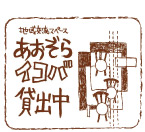Types of Activities
In mainly these four areas we conduct studies, make recommendations, hold public lectures, symposiums, and other events with citizen participation, gather documents and source materials, provide information, host observation tours and trainees, lend support for school classes, conduct international exchanges, and more.
1) Developing pollution-free communities
Urban environments need improvement because automobile pollution is still serious in major cities. We therefore make recommendations for people- and environment-friendly road policy, work on practical experimentation and dissemination of eco-friendly driving habits to cut CO2 emissions, offer classes on street conditions in which people together consider traffic problems and work out practical solutions, promote the use of environmental impact assessments that have citizen participation, and run other programs. We are also working on urban development that makes the most of the Nishiyodogawa area’s history and community.
2) Relating the experience of severe pollution
We have undertaken the preservation and organization of documents on citizen movements and court cases, and community source materials that inform people about pollution and the damage it has caused in Nishiyodogawa and other parts of Japan. The Nishiyodogawa Library on Pollution and the Environment has been created in the Aozora building for this purpose, and it is open to everyone.
Other initiatives include collaboration with schools and developing educational materials, hosting people for observation tours and training, and exchanges with Asian environmental NGOs.
3) Learning about nature and the environment
Local citizens, including children, participate in our efforts to gather environmental information available from our immediate environment and living things in our midst. In addition to surveys of indicators like dandelions and shed cicada skins, and surveys of organisms in the Yagura coast mud flat, we develop recommendations for protecting the valuable pockets of nature remaining in cities.
4) Making life worthwhile for pollution victims
Pollution victims want to recover their health, which was damaged by air pollution, and continue living meaningfully where they’ve always lived, free of worries. To improve the health of aging pollution victims and give them purpose in life, we provide instruction in horticulture, water relaxation, and other activities. We also perform studies to understand patient convalescence, and consider what assistive measures are needed for aging pollution victims.







